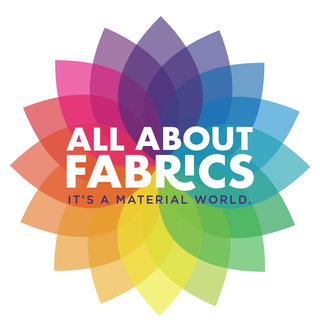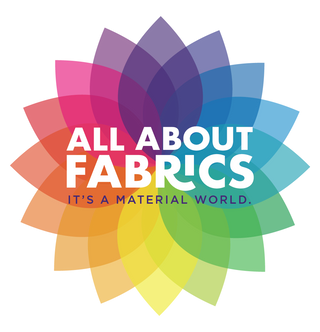If you’re new to sewing, choosing the right fabric can seem like a daunting task. The vast array of fabrics available can be overwhelming, but understanding which ones are best for beginners can make your sewing journey more enjoyable and successful. At All About Fabrics, we’ve compiled this guide to help you navigate your fabric choices, ensuring you start your sewing projects with confidence.
1. Cotton: The Go-To Fabric for Beginners
Why Cotton is Ideal: Cotton is often recommended as the best fabric for beginners due to its versatility, ease of handling, and availability. Here’s why cotton should be your first choice:
- Easy to Sew: Cotton is a stable fabric with a consistent weave, which makes it easy to sew with and reduces the risk of puckering or stretching.
- Affordable: Cotton is widely available and relatively inexpensive, making it a budget-friendly option for practice and experimentation.
- Variety: Cotton comes in various weights and prints, including quilting cotton, which is a great choice for many beginner projects like tote bags, pillowcases, and simple garments.
- Pre-Wash: Cotton can be easily pre-washed to remove any shrinkage or residual chemicals, ensuring that your finished projects maintain their size and shape.
Recommended Projects:
- Simple skirts and dresses
- Quilts and quilting projects
- Tote bags and home décor items
2. Flannel: Cozy and Beginner-Friendly
Why Choose Flannel: Flannel is a soft, warm fabric that’s a great choice for beginners looking to create cozy, comfortable items. Its characteristics include:
- Soft and Warm: Flannel is typically made from cotton or a cotton blend, giving it a soft feel and making it ideal for cooler weather garments and home goods.
- Stable and Manageable: Flannel has a bit of nap, or texture, which adds to its cozy feel but can still be handled easily by beginners.
- Easy to Cut and Sew: The fabric is easy to cut and sew, and it’s less likely to fray than some other fabrics, which simplifies the sewing process.
Recommended Projects:
- Pajamas and loungewear
- Baby blankets and burp cloths
- Flannel shirts and cozy blankets
3. Jersey Knit: Stretchy and Comfortable
Why Jersey Knit Works: Jersey knit fabric is a stretchy material that’s perfect for beginners looking to make comfortable, fitted garments. Key features include:
- Stretch and Flexibility: Jersey knit fabrics have built-in stretch, making them forgiving and easier to work with when creating garments that need a bit of give.
- Minimal Fraying: The knit structure prevents the edges from fraying, which means less finishing work.
- Comfort: The soft, stretchy nature of jersey makes it ideal for casual wear, activewear, and comfortable tops.
Recommended Projects:
- T-shirts and tops
- Dresses with a relaxed fit
- Leggings and activewear
4. Linen: Light and Breezy
Why Linen is Great: Linen is a natural fabric known for its breathability and classic look. While it requires a bit more care than cotton or flannel, it’s still a good option for beginners who want to try something different:
- Breathable and Lightweight: Linen is perfect for warm weather clothing due to its lightweight and breathable nature.
- Easy to Work With: While linen can wrinkle easily, it’s relatively easy to sew, especially if you’re making loose-fitting garments.
- Elegant Appearance: Linen has a timeless, sophisticated look that can elevate any sewing project.
Recommended Projects:
- Summer dresses and skirts
- Light-weight blouses
- Casual pants and shorts
5. Fleece: Soft and Warm for Winter Projects
Why Fleece is a Good Choice: Fleece is a synthetic fabric that’s incredibly warm and soft, making it ideal for beginners looking to make winter wear:
- Warm and Cozy: Fleece is an excellent choice for cold-weather projects due to its insulating properties.
- Easy to Handle: The fabric is easy to sew with and doesn’t fray, which simplifies finishing edges.
- Low Maintenance: Fleece is generally low-maintenance and doesn’t require special care beyond regular washing.
Recommended Projects:
- Winter jackets and vests
- Blankets and throws
- Hats and scarves
6. Satin: A Touch of Luxury
Why Satin is Beginner-Friendly: Satin is known for its shiny, smooth surface and luxurious feel. While it might seem challenging, beginners can handle it with a few tips:
- Shiny and Elegant: Satin’s glossy finish adds a touch of elegance to garments and accessories.
- Smooth Surface: Although it can be slippery, using the right tools and techniques can make sewing with satin manageable.
- Special Occasions: Satin is ideal for formal wear and special occasion garments.
Recommended Projects:
- Evening gowns and dresses
- Accessories like sashes and ribbons
- Lingerie and sleepwear
7. Denim: Durable and Classic
Why Denim is Great: Denim is a sturdy fabric that’s perfect for projects requiring durability and a classic look. Here’s why denim is a good choice for beginners:
- Strong and Durable: Denim is a heavyweight fabric that can handle wear and tear, making it ideal for jeans, jackets, and skirts.
- Structured: The fabric’s structure provides shape to garments and is relatively easy to sew with a heavy-duty needle.
- Versatile: Denim comes in various weights and washes, offering plenty of options for different projects.
Recommended Projects:
- Jeans and denim skirts
- Jackets and vests
- Tote bags and accessories
Tips for Choosing Fabrics for Beginners:
- Consider Your Project: Match your fabric choice with the type of project you’re making to ensure it suits your design and skill level.
- Check Fabric Widths: Most patterns require specific fabric widths; ensure your chosen fabric meets these requirements.
- Test Swatches: Before committing to a full yard, purchase swatches or samples to test how the fabric handles and see if it meets your needs.
Choosing the right fabric can make a significant difference in your sewing experience, especially as a beginner. Cotton, flannel, jersey knit, linen, fleece, satin, and denim are excellent starting points, each offering unique qualities that make them suitable for different types of projects. By selecting fabrics that are easy to work with and align with your project goals, you’ll find your sewing journey more enjoyable and rewarding.
At All About Fabrics, we offer a wide range of high-quality fabrics for every project and skill level. Explore our selection today at AllAboutFabrics.com and start creating beautiful, handmade items with ease!


